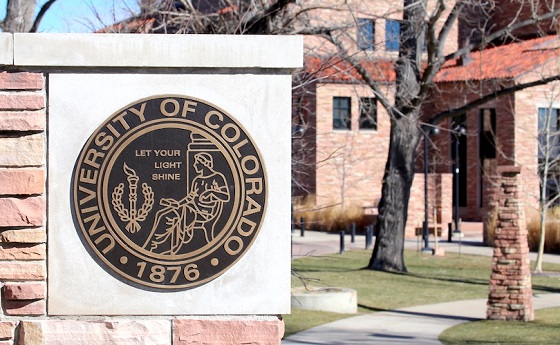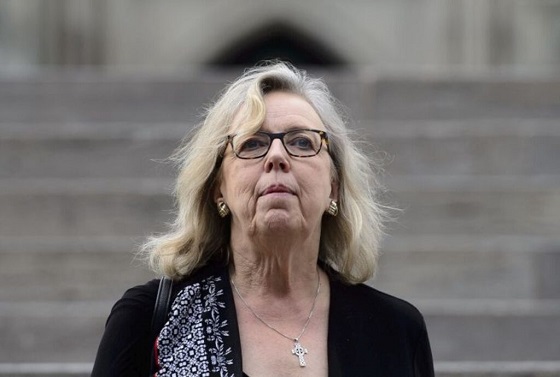Health
Canadian media might not be able to ignore new studies on harmful gender transitions for minors

From LifeSiteNews
When the UK National Health Service’s bombshell Cass Review condemning gender “transition” for minors was published, virtually the entire Canadian press engaged in a voluntary blackout.
Unless you were reading an alternative news source, an international news source, or the National Post, it was as if Cass Review — and its findings — had simply never existed. Many media outlets did not run a single story; the state-funded CBC ran precisely one, and it was a laughable hatchet job claiming that the massive study was “biased.” They did not interview a single person associated with the research.
The Canadian press has functioned for years as a propaganda arm for the transgender movement, even as the gender ideology house of cards topples in in the U.S. and the UK, where there have been genuinely robust debates informed by scientific evidence rather than ideology. Thus, I wonder how they will deal with new studies by Canadian researchers that reach many of the same conclusions.
As Sharon Kirkey of the National Post reported. “The evidence surrounding the use of puberty blockers and cross-sex hormones in children and teens identifying as transgender is of such low certainty it’s impossible to conclude whether the drugs help or harm, Canadian researchers are reporting.” The research was funded by the Society for Evidence-based Gender Medicine (SEGM) and McMaster University, considered to one of Canada’s top institutions of higher hearing, and published this week in the journal Archives of Disease in Childhood.
“There’s not enough reliable information,” said Chan Kulatunga-Moruzi, one of the authors of the two new reviews. “We really don’t have enough evidence to say that these procedures are beneficial. Few studies have looked at physical harm, so we have really no evidence of harm as well. There’s not a lot that we can say with certainty, based on the evidence.” (Here, I would note that there are now thousands of testimonies of detransitioners testifying to the harm that sex-change “treatments” have caused them, but this is a remarkable admission nonetheless.)
The researchers conclude that doctors should approach these “treatments” with extreme care, clearly communicating with parents and children and — notably — checking “whose values they are prioritizing” if they should decide to prescribe cross-sex hormones or puberty blockers. As Kirkey put it with devastating understatement: “Originally considered fully reversible, concerns are emerging about potential long-term or irreversible effects, the Canadian team wrote … Questions have been raised about the effects of fertility or what impact, if any, they might have on brain development.”
The researchers painstakingly went through the available evidence on both cross-sex hormones and puberty blockers (Kirkey irritatingly refers to them as “gender-affirming hormones”) for those up to 26 years old. To analyze the evidence, they “graded” it “using a scoring system co-developed by Dr. Gordon Guyatt, a celebrated McMaster University scientist who coined the phrase evidence-based medicine.” As Kirkey reported:
After screening 6,736 titles and abstracts involving puberty blockers, only 10 studies were included in their review. While children who received puberty blockers compared to those who don’t score higher on “global function” — quality of life, and general physical and psychological wellbeing — the evidence was of “very low certainty.” Very low, meaning researchers have “very little confidence in the effect estimate” and that the true effect “is likely to be substantially different from the estimate of effect.”
It gets worse. The research also debunked the perpetually asserted claim utilized by trans activists and their political allies to enforce their agenda: that these drugs are necessary to prevent depression and suicidal ideation. According to the researchers: “We are very uncertain about the causal effect of the (drugs) on depression. Most studies provided very low certainty of evidence about the outcomes of interest; thus, we cannot exclude the possibility of benefit or harm.” Again, despite the careful understatement, this is devastating: Thousands of children have been subjected to these treatments on the premise that they prevent harm and are harmless.
Indeed, the second review, which analyzed 24 studies, reached the similar conclusion of “very low confirmatory evidence of substantive change” not just in depression or health overall but even in gender dysphoria itself. As Kirkey noted: “Many studies suffered from missing data, small sample sizes, or lacked a comparison group.” The researchers concluded: “Since the current best evidence, including our systematic review and meta-analysis, is predominantly very low quality, clinicians must clearly communicate this evidence to patients and caregivers. Treatment decisions should consider the lack of moderate- and high-quality evidence, uncertainty about the effects of puberty blockers and patient’s values and preferences.”
Imagine for a moment that you are a teen or young person who started these treatments after having been told, with utter, aggressive confidence, by counselors, psychiatrists, and doctors that they were both harmless and necessary — that they could even save your life. Imagine being a parent who subjected your child to these treatments, convinced by “experts” that this was the best thing you could do to love your son or daughter. I have written these words too many times to count: This is a medical scandal of unprecedented proportions in this century, and those that perpetrated it must be held accountable.
Health
News RFK Jr.’s vaccine committee to vote on ending Hepatitis B shot recommendation for newborns

From LifeSiteNews
The goal is to examine whether vaccines on the recommended schedule are contributing to the rise in allergies, autoimmune diseases, and other conditions such as autism.
Vaccine advisors to Department of Health and Human Services Secretary Robert F. Kennedy Jr. plan to vote on ending the recommendation of the Hepatitis B shot for infants and discuss other changes to the childhood vaccination schedule.
The federal advisers, selected by RFK Jr., will meet on Thursday and Friday to review the childhood vaccination schedule, according to a report from The Washington Post. The goal is to examine whether vaccines on the recommended schedule are contributing to the rise in allergies, autoimmune diseases, and other conditions such as autism.
The vaccine panel, headed by Kirk Milhoan, a pediatric cardiologist and critic of the COVID shots, plans to vote on ending the Hepatitis B vaccine recommendation for infants within 24 hours of birth. The panel will decide whether to delay the first dose to a later time.
Critics of the very early administration of the first Hepatitis B vaccine dose argue that it represents an unnecessary risk, as the vast majority of children are not at risk of infection.
The vaccine committee makes recommendations to the CDC director on the vaccine schedule. Directors have typically adopted the panel’s recommendations, compelling insurers to cover certain vaccines. These recommendations also provide a guideline for most pediatricians and medical organizations.
READ: Florida moving to be first state to end all childhood vaccine mandates
“We’re looking at what may be causing some of the long-term changes we’re seeing in population data in children, specifically things such as asthma and eczema and other autoimmune diseases,” Milhoan told The Washington Post.
“What we’re trying to do is figure out if there are factors within vaccines,” he added.
He said that the committee is examining the potential dangers of using aluminum as an adjuvant, an ingredient meant to trigger an immune response strong enough for the body to develop antibodies and protect the person from the disease.
RFK Jr.’s panel has been heavily criticized by establishment health organizations and the pharmaceutical industry. Big Pharma officials have said that removing aluminum from vaccines and replacing it with another adjuvant would cost billions of dollars and take years.
The CDC recently revised its website on the issue of autism and vaccines, now stating, “The claim ‘vaccines do not cause autism’ is not an evidence-based claim because studies have not ruled out the possibility that infant vaccines cause autism.” The CDC had previously held that there was definitely no link between vaccines and autism. The change was made at the direct order of RFK Jr.
The McCullough Foundation, founded by famous cardiologist and COVID response critic Dr. Peter McCullough, goes even further in its critique of childhood vaccines. In a recent extensive report, the authors analyzed 12 studies comparing routinely vaccinated with unvaccinated children. According to the report, all of these studies showed “superior overall health outcomes among the unvaccinated, including significantly lower risks of chronic medical problems and neuropsychiatric disorders such as ASD [Autism spectrum disorder].”
Health
23,000+ Canadians died waiting for health care in one year as Liberals pushed euthanasia

From LifeSiteNews
Tens of thousands of Canadians have died while on waitlists in recent years, according to new data. Meanwhile, euthanasia now accounts for five percent of all deaths in Canada.
Over 23,000 Canadians have died while on waitlists for medical care as Liberals focused on euthanasia expansions.
According to government figures published on November 26 by Canadian think tank SecondStreet.org, 23,746 patients died on government waiting lists for health care between April 2024 and March 2025.
“What’s really sad is that behind many of these figures are stories of patients suffering during their final years – grandparents who dealt with chronic pain while waiting for hip operations, people leaving children behind as they die waiting for heart operations, so much suffering,” SecondStreet.org President Colin Craig explained.
“It doesn’t have to be this way. If we copied better-performing European public health systems, we could greatly reduce patient suffering,” he continued.
According to the data, collected through Freedom of Information (FOI) requests, there has been a three percent increase of deaths while on waitlists compared to last year. The number is likely much higher, as the reports did not include figures from Alberta and some parts of Manitoba.
Data further revealed that 100,876 Canadians have died while waiting for care since 2018, thanks to increased wait times and insufficient staffing.
“It’s interesting that governments will regularly inspect restaurants and report publicly if there’s a minor problem such as a missing paper towel holder,” Craig noted. “Meanwhile, no government reports publicly on patients dying on waiting lists. It’s quite hypocritical.”
At the same time, the Liberal government has worked to expand euthanasia 13-fold since it was legalized, making it the fastest growing euthanasia program in the world. Meanwhile, Health Canada has released a series of studies on advance requests for assisted suicide.
As LifeSiteNews reported earlier this week, so-called “Medical Assistance in Dying” (MAID) is responsible for five percent of all deaths in Canada in 2024.
At the same time, internal documents from Ontario doctors in 2024 that revealed Canadians are choosing euthanasia because of poverty and loneliness, not as a result of an alleged terminal illness.
Currently, wait times to receive genuine health care in Canada have increased to an average of 27.7 weeks, leading some Canadians to despair and opt for assisted suicide instead of waiting for medical aid. At the same time, sick and elderly Canadians who have refused to end their lives have reported being called “selfish” by their providers.
In one case, an Ontario doctor revealed that a middle-aged worker, whose ankle and back injuries had left him unable to work, felt that the government’s insufficient support was “leaving (him) with no choice but to pursue” euthanasia.
Other cases included an obese woman who described herself as a “useless body taking up space,” which one doctor argued met the requirements for assisted suicide because obesity is “a medical condition which is indeed grievous and irremediable.”
The most recent reports show that euthanasia is the sixth highest cause of death in Canada. However, it was not listed as such in Statistics Canada’s top 10 leading causes of death from 2019 to 2022.
-

 Energy1 day ago
Energy1 day agoA look inside the ‘floatel’ housing B.C.’s LNG workforce
-

 International2 days ago
International2 days agoFBI may have finally nabbed the Jan. 6 pipe bomber
-

 COVID-191 day ago
COVID-191 day agoUniversity of Colorado will pay $10 million to staff, students for trying to force them to take COVID shots
-

 espionage2 days ago
espionage2 days agoDigital messages reportedly allege Chinese police targeted dissident who died suspiciously near Vancouver
-

 Energy1 day ago
Energy1 day agoELZABETH MAY HAS IT WRONG: An Alberta to Prince Rupert Oil Pipeline Will Contribute to Greater Global Oil Tanker Safety
-

 National1 day ago
National1 day agoAlberta will use provincial laws to stop Canadian gov’t from trying to confiscate legal firearms
-

 illegal immigration12 hours ago
illegal immigration12 hours agoWhile Trump has southern border secure, hundreds of thousands of illegal immigrants still flooding in from Canada
-

 Censorship Industrial Complex9 hours ago
Censorship Industrial Complex9 hours agoCanadian bishops condemn Liberal ‘hate speech’ proposal that could criminalize quoting Scripture



